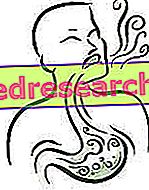Generality
Malaria is a disease caused by four distinct protozoa, belonging to the genus Plasmodium, which are transmitted to humans through the bite of female mosquitoes of the genus Anopheles . These vector insects can become infected by pricking a sick individual and transmitting the infection to a healthy person with a second puncture.

Symptoms
To learn more: Malaria symptoms
When an infected mosquito bites a healthy individual, the parasites enter the bloodstream, migrate to the liver and penetrate the hepatocytes, where they proliferate almost undisturbed.
After this period of active proliferation, which lasts about 2-4 weeks, the parasitic children escape from the liver cells, invade the bloodstream and enter the red blood cells. Here they begin to multiply again, until they free themselves from the exterior by damaging the cell; just to this lesion are associated the clinical signs of malaria, which include febrile episodes (associated with cold spells followed by profuse sweating, heat and intense thirst), anemia and increase in the size of some organs (especially spleen and liver). After leaving the erythrocytes, the new parasites invade other red blood cells, resuming a process that is repeated cyclically in waves (hence the particular trend of febrile episodes), at least as long as the host's defensive processes do not interrupt it.
The interval between the various crises depends on the type of malaria, in turn determined by the causative agent that caused it; Plasmodium falciparum, Plasmodium vivax and Plasmodium ovale cause tertiary malaria (in which the febrile accesses are repeated every three days), while Plasmodium malariae causes quartan malaria (in which the febrile accesses are repeated every four days).
Insights and curiosity
The first historical notes on malaria What causes malaria? Malaria distribution Malaria and thalassemia link How is malaria transmitted? How can Malaria be prevented? Malaria vaccinesDiagnosis
The diagnosis is based on the microscopic research of parasites in a blood sample taken (preferably) a few hours before the febrile access.
Treatment
Preventive and curative treatment of malaria is carried out by administering appropriate drugs, such as chloroquine (often ineffective due to the presence of resistant parasites), quinine sulfate - hydrochloride and artemisinin derivatives; also important is the environmental prophylaxis (drying up of swamps, use of insecticides and larvicides on a large scale, elimination of stagnant water) and individual, both of a general type (use of appropriate clothing, insect repellents and application of mosquito nets on the windows and around the beds) and pharmacological (chemoprophylaxis with chloroquine or other antimalarial drugs is strongly recommended for non-immune subjects who go to endemic areas).
In individuals who overcome the disease there remains a specific immunity for the plasmodium that caused malaria, even if that against Plasmodium falciparum disappears a few months after recovery; this malarial form is - among other things - the most difficult to overcome, so that often the clinical picture becomes complicated until the patient's death. In any case, whatever the etiologic agent involved, the disease often has milder relapses, even months or even years before its complete recovery.
Several malaria vaccines are currently undergoing advanced testing, with encouraging premises. One of these (Mosquirix ®) was approved by the EMA - the European Medicines Agency - in July 2015.
Medicines for the treatment and prevention of Malaria »



